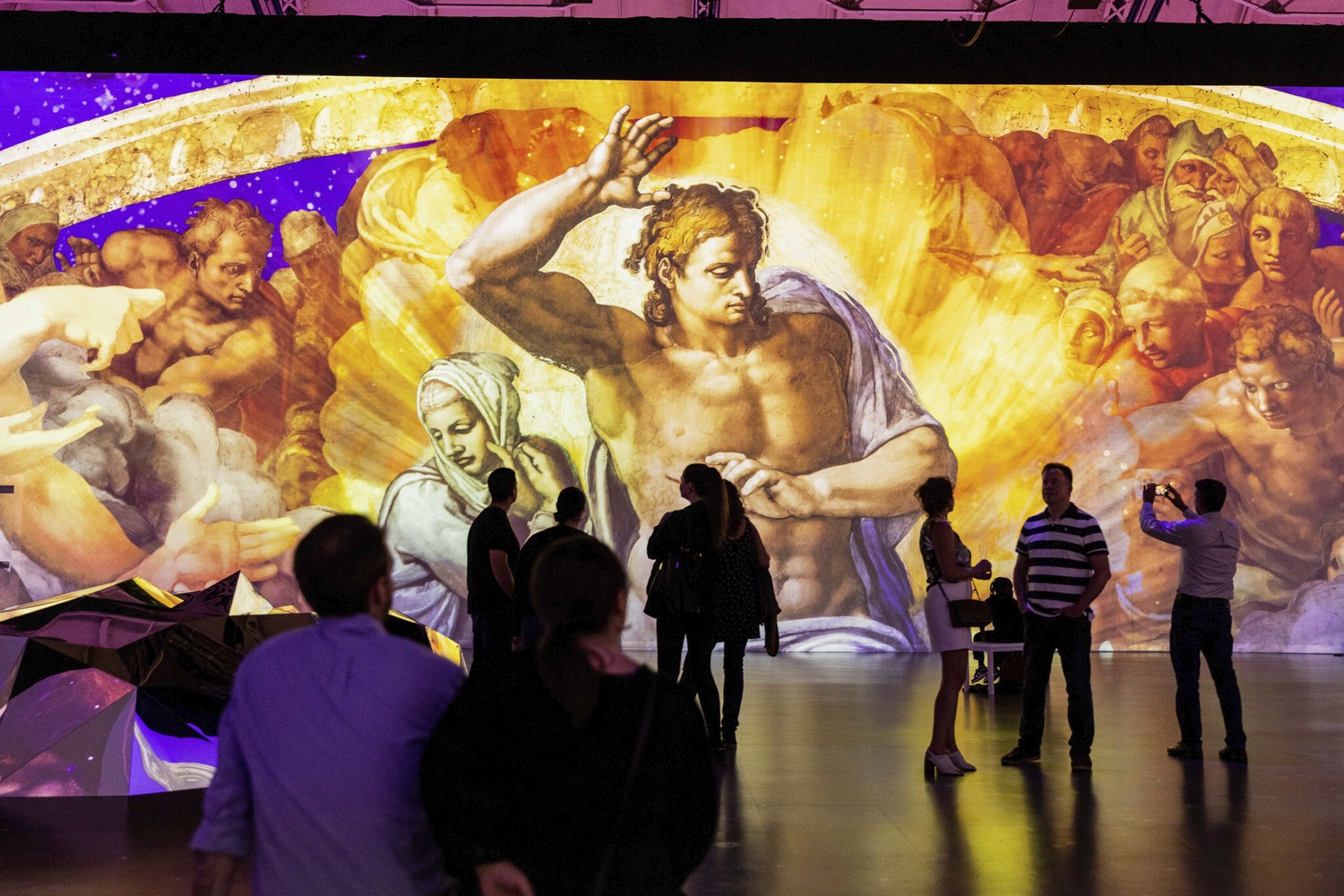
News
Summers Will Not Finish Semester of Teaching as Harvard Investigates Epstein Ties

News
Harvard College Students Report Favoring Divestment from Israel in HUA Survey

News
‘He Should Resign’: Harvard Undergrads Take Hard Line Against Summers Over Epstein Scandal

News
Harvard To Launch New Investigation Into Epstein’s Ties to Summers, Other University Affiliates

News
Harvard Students To Vote on Divestment From Israel in Inaugural HUA Election Survey
‘Immersive Vatican’ Review: A Non-Compromising Bridge Between Accessibility and Authenticity

Despite being the smallest state in the world both by area and population, the Vatican attracted over 5 million visitors every year before the Covid pandemic. Its modest 121 acres are home to some of the world's most significant historical moments, including Michelangelo’s painting of the Sistine Chapel ceiling and Galileo’s declaration of the Heliocentric theory. The pandemic, however, significantly limited travelers’ ability to explore this concentration of religious and cultural symbolism. And even before the pandemic, complete artistic immersion required thorough planning and intentional travel.
To bridge that gap between accessibility and authentic artistic appreciation, Lighthouse Immersive — a multimedia curation company — has unveiled its "Immersive Vatican" exhibit at the Lighthouse ArtSpace in Boston. Now, for the rough price of an expensive meal out, guests can enjoy a guided historical excursion that spans the catacombs, crusades, biblical scenes, historical events, sculpture, architectural spreads, and vibrant frescoes.
Though the exhibit and its format necessarily skews the intended artistic experience of the artworks featured due to their being enlarged and removed from their original context, the Immersive exhibit makes up for this by providing a uniquely intimate experience. By looking at a piece projected in all its magnificent colors on a huge wall, viewers receive a more nuanced and arguably authentic reading and interpretation of a work than they would by cramming into a crowded facility to see it hung in a small frame guarded by police.
Some viewers may also question the commercialization of religious themes — a feature absent in previous Immersive exhibits. Many past Immersive shows, such as those that highlighted the works of Monet and Van Gogh, have revolved around individual famed artists. The Vatican, on the other hand, in addition to displaying historic art and architecture, serves as the headquarters of the Catholic Church. The curators, then, must walk the line of honoring the religion without fetishizing the art and appreciating the art without minimizing the spiritual undertones.
The creative force behind the exhibit, curator Massimiliano Siccardi, who is Italian and Catholic, obviously weighed this religious aspect as a powerful presence of the culture on display but not the singular focus. The show includes catacombs, popes, and crusades, but is by no means devoted to them. Immersive Vatican carefully honors the natural tie between the history of art and religion for this time period without objectifying it.
Further, there is one significant historical figure present in the exhibit who skirts around the religious themes of the time. Works from famed Italian painter Caravaggio, who is known for his body of non-religious work, are included in the show to demonstrate the diversity of artists working during the time period.
This theme of honoring and acknowledging yet also appreciating and deconstructing is seen not only in the thought put into the chronology and storytelling of the Immersive exhibit but also in every detail of the show. For example, the minute strokes of paint audiences see running through the montages at strategic points in the exhibit may at first glance seem like creative transitions, but they are actually an homage to how Michelangelo painted the ceiling of the Sistine Chapel: lying down with streaks of paint running into his eyes. The architecture of the transitions thus mirrors the physical experience of having paint run into your eyes and face when painting a chapel ceiling. Such historical nuances are introduced into the show due to the hard work of a large staff of researchers and historians based in Italy.
Every minute of the exhibit is packed with historical nuance, cultural references, and glorious eye candy. The colors are illuminated brilliantly, the storyline is laid out strategically, and the whole experience brings a sense of wonder and reverence for humankind. The experience is immersive in every sense of the word, and it should be included on every history buff’s, art critic’s, or just general museum-goers' list of things to see in Boston.
—Staff writer Elizabeth A. Kozlov can be reached at elizabeth.kozlov@thecrimson.com.
Want to keep up with breaking news? Subscribe to our email newsletter.
